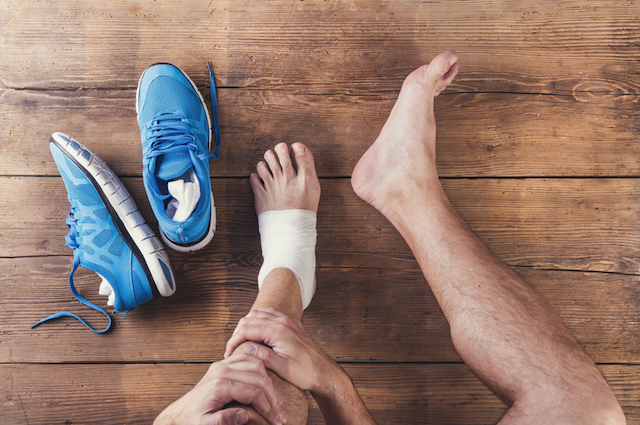
Pain vs. Strain…what kind of pain should athletes tolerate?
Athletes continually push their physical limits in order to perform at their highest level. A trusted coach should be aware of how much to push athletes. Tendon pain is a common problem when pushing too much. Tendons connect muscle to bone. Any joint pain could be caused by an injury of the tendon. An understanding of how to properly manage and advance an athlete within a given sport season is vital to minimizing both time lost and the further progression of any tendon symptoms. This overview is intended to familiarize the trusted coach with the causes of tendon pain, highlight the importance of early recognition and management of symptoms, and provide general recommendations to facilitate an athlete’s return to their sport.
Any sudden increase in physical activity or exercise can serve as a potential risk factor for developing tendinopathy (chronic painful tendon injury), especially if the type of physical activity is drastically above or different from the athlete’s level of activity or fitness. The start of a new strength and conditioning program or the onset of an athlete’s sport season can trigger the development of a tendinopathy. . Pushing the tendon beyond its capacity may cause the tendon to suffer microtrauma, which can initiate tendinopathy.
Tendinopathy can result in significant disability. Early identification of tendon symptoms are crucial to providing proper management while minimizing time loss from sport. For this reason, trusted coaches must be attentive to managing the overuse of extremities to decrease the chance of injury. In other words, start slow with high intensity activities and accommodate for variation among athletes. A trusted coach should also foster an open reporting process for athletes who are experience any pain so that they don’t push beyond what their bodies are trained to do.
A second helpful component of self-monitoring pain is to assess pain response for 24 hours after activity. If pain “settles” within 24 hours of completing activity, a Trusted Coach can deduce that the load applied to the tendon was appropriate. If pain persists or increases past 24 hours, the load may have been too great for the tendon at that time, and the intensity should be decreased.
A physical therapist or other rehabilitation professional can be helpful in identifying lingering issues from strength imbalances, through functional testing and other assessments that may have contributed to the original cause of injury. Once an athlete returns to normal competition, it is imperative that the athlete continue a maintenance program of tendon strengthening to help prevent the return of symptoms and foster a healthy state within the tendon. A Trusted Coach should encourage their athletes to perform their maintenance program.
In summary, tendinopathy is a common cause of persistent pain within the athletic population. Due to the delayed onset of symptoms, trusted coaches must identify the earliest reports of tendon pain. Strategies should follow a progression that is based on the athlete’s individual symptoms both during exercise and in the following 24 hours. Adhering to the recommendations for self-monitoring of pain can provide a framework to avoid tendon pain flare-ups and safely progress the athlete back to their pre-injury level of physical activity. Working with a sports medicine physician, sports physical therapist, or an athletic trainer can help trusted coaches ensure their athletes with tendinopathy are provided the proper rehabilitation and can return to their sport in the most efficient manner.
If you or someone you know has persistent pain that isn’t improving with rest, is worsening, or for more information about physical therapy and athletic training services, please call the Institute for Athletic Medicine (IAM) at 612-672-7100 or the 24-hour Injury Hotline at 952-920-8850. Visit us online at athleticmedicine.org.
Braidy Solie, PT, DPT, CSCS
Josie Oakland, PT, DPT, ATC
Fairview/ Institute for Athletic Medicine Sports Physical Therapy Residents
Malliaras, P., Cook, J., Purdam, C., Rio, E. (2015). Patellar Tendinopathy: Clinical diagnosis, load management, and advice for challenging case presentations. Journal of Orthopedic and Sports Physical Therapy, 45(11): 887-898.
